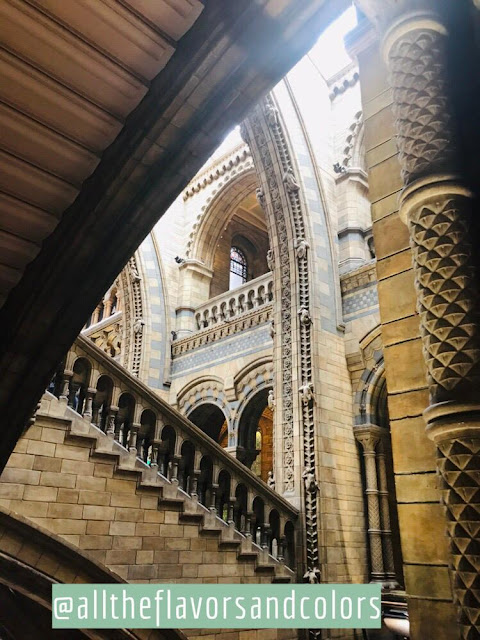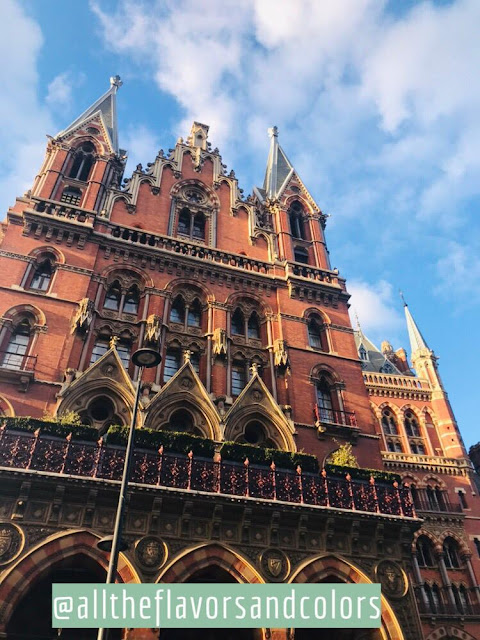London is all about architecture, diverse cuisine, fashion edge and luxury lifestyle. You will discover this as soon as you set foot in here, during a city break, or, better yet, if you decide to spend a full holiday in Great Britain's majestic capital.
In terms of historical background, you should know that London has been an important city since Roman times and, for more than 2.000 years, it has been a central hub of commerce. In fact, the name “London” was first used by the Romans in the settlement of Londinium.
London has not been spared of major events, such as great fires, revolutions, wars and terrorism, all these leaving their marks over this great city, rich in history, music and culture.
Nowadays, London is a global leader in banking and financial services, as well as an important educational hub, with more than 40 universities - the highest concentration of higher education in Europe.
As London has numerous major attractions, I decided to dedicate two articles to this beautiful city. This one tries to cover the cultural side of London, with focus on its grand museums, while the following article shall approach topics such memorable neighborhoods, places to eat or accommodation tips.
British Museum
British Museum (https://www.britishmuseum.org/) retraces the history of humankind, through its amazing collection of artifacts worldwide. First thing you should know about this amazing museum is that the access to the permanent collection is absolutely free. So, no wonder it has over six million visitors annually.
The British Museum was founded in 1753, opened to the public on 15 January 1759 (thus becoming the first national public museum in the world) and its doors have stayed opened ever since, with the exception of two World Wars. The British Museum’s bases have been put by the naturalist and collector Sir Hans Sloane (1660–1753). This Museum contains more than 13 million artifacts and objects from Assyria, Babylonia, Europe etc. but most tourists are interested in the most famous exhibits: the Parthenon sculptures, Townley collection of classical sculpture, the Rosetta Stone, the bust of Ramsses II or the Egyptian mummies.
The museum also hosts an impressive indoor court – the Queen Elizabeth II Great Court, the largest covered public space in Europe.
Natural History Museum
The Natural History Museum (https://www.nhm.ac.uk/) is one of three major museums on Exhibition Road in South Kensington, alongside Science Museum and Victoria and Albert Museum. The Natural History Museum was built in 1880 with a Romanesque design and features a grand central hall with many galleries extending to each side.
The museum is home to over 80 million items, within its five collections: botany, entomology, mineralogy, paleontology and zoology. The Natural History Museum does not charge an admission fee. This is the perfect museum for families with children, as the child-friendly exhibits and activities keep everyone occupied.
Tate Modern Art Gallery
If you are into modern art, Tate Modern (https://www.tate.org.uk/) is a must-see when visiting London. Tate Modern is housed in a former power station (the Bankside Power Station), that was designed by architect Giles Gilbert Scott and built between 1947 -1963. When the power station closed (1981), it sat abandoned until the Tate collection moved in and opened to the public (2000). Tate Modern is the most important center for modern and contemporary art in London, as it contains world-class paintings, photographs and performance art, including works of Andy Warhol and Salvador Dalí.
Also, thanks to its 65 meters tower, it is relatively easy to find it and you really should find it, as a visit to the Tate Cafe and Espresso Bar allows you to admire stunning views of the River Thames and the city. This is also a free-access museum, thus the 5.9 million people visiting it in 2018.
Buckingham Palace
Buckingham Palace (https://www.royal.uk) became the main royal residence in 1837, on the accession of Queen Victoria (the first monarch to reside there) and is one of the world's few remaining working royal palaces, as, nowadays, the Queen receives a large number of formal and informal visitors to the Palace.
The palace has 775 rooms, including the 19 State Rooms and 78 bathrooms, as well as a beautiful garden - the largest private garden in London. The state rooms, used for official affairs, are open to the public each year during the months of August and September. One of Great Britain's most iconic buildings, Buckingham Palace is also the scene of London's most popular display of pomp - the Changing of the Guard (https://changing-guard.com/dates-buckingham-palace.html).
St. Pancras Railway Station
St. Pancras railway station (https://stpancras.com/) is one of the most modern train stations in the United Kingdom. This great Victorian building is a key railway station for Eurostar and the high speed rail in the UK, as well as a popular meeting place.
St. Pancras railway station is also famous for the majestic statues it houses, mainly the Meeting Place sculpture, commonly known as "The Lovers" statue. This is a 9-metre-high sculpture, designed by British artist Paul Day and unveiled in 2007, intended to evoke the romance of travel through the depiction of a couple locked in embrace.
Also, the Betjeman Statue, designed by Martin Jennings and cast in 2007, is highly praised by tourists. Sir John Betjeman was responsible for saving the Station from demolition in the 1960's.
Tower Bridge
This Victorian bridge attracts thousands of tourists each year. You should know that, since 1982, visitors can also go inside this tower (https://www.towerbridge.org.uk/), visit the engine rooms and reach the glass-floored viewing platform above.
Tower Bridge was built over 125 years ago to ease road traffic while maintaining river access London docks. It is to this day considered an engineering marvel and one of London’s favorite attractions.
London Eye
A trip to London cannot be over without visiting the iconic London Eye. Built to mark London's millennium celebrations (2000), the London Eye (https://www.londoneye.com/) is Europe's largest observation wheel, offering gorgeous 360-degree views across London. Its individual capsules offer the most spectacular views of the city, as you embark on a circular 30 minutes-tour rising above the River Thames.
London Eye is the most popular paid tourist attraction in the United Kingdom, with over 3.75 million visitors annually. Therefore, as it is pretty popular among tourists, you could consider to skip the line with a London Eye: Skip-the-Line Ticket. The London Eye used to be the highest public viewing point in London until it was superseded by the observation deck of The Shard, which opened to the public on 1 February 2013.
Madam Tussauds
The famous Madame Tussauds wax museum in London (https://www.madametussauds.com/london/en/) was founded by wax sculptor Marie Tussaud. This major tourist attraction displays the waxworks of famous figures, popular film actors and television characters. Many of the original models made by Marie Tussaud, including the statues of Voltaire, Benjamin Franklin or Horatio Nelson, are still preserved.
Museum of London
Museum of London (https://www.museumoflondon.org.uk/museum-london) traces London's history from its beginnings to present days, with a special attention on the drama caused by the Great Fire of London and the charm of the Victorian period. Enjoy the interactive displays and follow the documented evolution of London. As in the case of many other museums in London, the access to the Museum of London is also free of charge. The museum is the largest urban history collection in the world, with more than six million objects.
St Paul's Cathedral
Museum of London is just a few minutes' walk north of St Paul's Cathedral (https://www.stpauls.co.uk/), the seat of the Bishop of London. The largest and most famous of London's many churches, the cathedral is one of the most recognizable sights of London. Its dome has dominated London's skyline for over 300 years. At 111 meters high, it was the tallest building in London from 1710 to 1967.
This is where famous events took place, such as the funerals of Admiral Nelson, the Duke of Wellington and Sir Winston Churchill, jubilee celebrations for Queen Victoria or the wedding of Prince Charles and Lady Diana Spencer. Once you get to St. Paul's Cathedral, climb the stairs to admire spectacular views of the dome's interior.
Trafalgar Square
Trafalgar Square is one of London’s most vibrant spaces. Its name commemorates the Battle of Trafalgar, a British naval victory in the Napoleonic Wars over France and Spain that took place on 21 October 1805 off the coast of Cape Trafalgar. Trafalgar Square is a center of national democracy and protest, as demonstrations are frequently held here on different political issues. This is where you will find Nelson’s Column, erected in order to honor Admiral Nelson, the two impressive fountains, added in 1845, and even the smallest police box ever built, on the south-east corner of the Square.
Once you reach Trafalgar Square, do not miss the two major museums here: National Gallery London and National Portrait Gallery.
National Gallery London
Ranking among the top art museums in the world, National Gallery London (https://www.nationalgallery.org.uk/) was founded in 1824 and houses over 2,000 paintings from the Dark Ages to the 20th century, including works by faimos painters such as Da Vinci, Michelangelo, Botticelli, Caravaggio Monet and Van Gogh. This is another great museum that is free of charge.
National Portrait Gallery
Just around the corner from the National Gallery, the National Portrait Gallery (https://www.npg.org.uk/) is home to a stunning collection of portraits, from paintings to photography. In fact, this is the the largest collection of portraits in the world. The permanent collection is also free to visit, making the National Portrait Gallery one of London’s most popular attractions, with two million visitors every year.
Tower of London
The Tower of London (https://www.hrp.org.uk/tower-of-london/#gs.29e7e7) is a 900-year-old castle and fortress in central London, on the north bank of the River Thames. Its buildings and grounds have played an important role in British history, serving as royal palace, royal mint, a political prison, an armory, a treasury, a menagerie, a public record office and the home of the Crown Jewels of England.
Throughout its history, the tower was used to imprison many famous prisoners, such as Lady Jane Grey, two of Henry VIII’s wives, Anne Boleyn and Katherine Howard, or Rudolf Hess, Hitler’s right hand officer - the last important prisoner to spend time in the tower.








































































































Niciun comentariu:
Trimiteți un comentariu